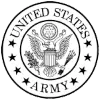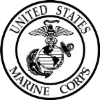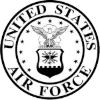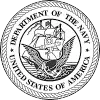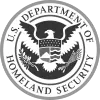Section 1: Introducing SharePoint 2016
This section discusses the structure and capabilities of a SharePoint environment, and the major changes for IT professionals in SharePoint 2016. This section also discusses the options available for deploying SharePoint 2016.
Lessons
The key components of a SharePoint deployment
New features in SharePoint 2016
SharePoint 2016 deployment options
Section 2: Designing an information architecture
This section discusses how to gather business requirements, and the key elements of a successful information architecture project. This section also examines how to structure information within a SharePoint 2016 deployment and make it easy to find and retrieve.
Lessons
Identifying business requirements
Understanding business requirements for information architecture
Organizing information in SharePoint 2016
Planning for discoverability
Lab : Designing an information architecture - Part one
Identifying site columns, content types, and term sets
Lab : Creating an information architecture - Part two
Designing keywords, synonyms, promoted results, thesaurus, and managed properties
Designing a taxonomy
Section 3: Designing a logical architecture
This section examines how to approach a logical architecture design and how to document it.
Lessons
Overview of a SharePoint 2016 logical architecture
Documenting your logical architecture
Lab : Designing a logical architecture
Planning a logical architecture
Producing a logical architecture diagram
Section 4: Designing a physical architecture
This section discusses the physical design requirements for SharePoint 2016, and the physical components necessary to fulfill the physical architecture design. It also examines the SharePoint farm topologies, and discusses how to map a logical architecture design to a physical architecture design.
Lessons
Designing the physical requirements of a SharePoint deployment
Designing supporting software for the physical components of a SharePoint deployment
SharePoint farm topologies
Mapping a logical architecture design to a physical architecture design
Lab : Designing a physical architecture
Designing a physical architecture
Developing a physical architecture design diagram
Section 5: Installing and configuring SharePoint 2016
This section examines how to install SharePoint 2016 in different topologies, script the installation, and configure a SharePoint 2016 environment. This section also examines how to configure the core farm-level settings in a SharePoint 2016 deployment.
Lessons
Installing SharePoint 2016
Scripting the installation and configuring a SharePoint 2016 environment
Configuring SharePoint 2016 farm settings
Lab : Provisioning SharePoint 2016
Provisioning a SharePoint 2016 server farm
Lab : Configuring SharePoint 2016
Configuring incoming email
Configuring outgoing email
Configuring integration with Microsoft Office Web Apps Server 2016
Section 6: Creating web applications and site collections
This section examines how to create web applications in SharePoint 2016 and how to configure these applications. It also examines how to create and configure site collections in SharePoint 2016 and SharePoint Online.
Lessons
Creating web applications
Configuring web applications
Creating and configuring site collections
Lab : Creating and configuring web applications
Creating a web application
Configuring a web application
Lab : Creating and configuring site collections
Creating and configuring site collections
Creating a site collection in a new content database
Using Fast Site Collection Creation
Section 7: Planning and configuring service applications
This section discusses the service application architecture in SharePoint 2016, and how to provision and manage service applications.
Lessons
Introduction to the service application architecture
Creating and configuring service applications
Lab : Configuring services and service applications
Provisioning a managed metadata service application with Central Administration
Provisioning a managed metadata service application with Windows PowerShell
Configuring service applications for document conversions
Configuring service application proxy groups
Section 8: Managing users, permissions, and securing content
This section examines how to configure authorization in SharePoint 2016. It also examines how to configure site collection security in SharePoint 2016.
Lessons
Configuring authorization in SharePoint 2016
Managing access to content
Lab : Managing users and groups
Creating a web application policy
Creating and managing SharePoint groups
Creating custom permission levels
Lab : Securing content in SharePoint 2016
Managing permissions and inheritance
Managing site collection security
Enabling anonymous access to a site
Section 9: Configuring authentication for SharePoint 2016
This section examines about the SharePoint 2016 authentication infrastructure, and how to configure claims, providers, and identity federation for SharePoint 2016. It also examines how to configure server-to-server authentication for SharePoint 2016.
Lessons
Overview of authentication
Configuring federated authentication
Configuring server-to-server authentication
Lab : Configuring SharePoint 2016 to use federated identities
Configuring Active Directory Federation Services (AD FS) to make a web application a relying party
Configuring SharePoint to trust AD FS as an identity provider
Configuring a web application to use the AD FS identity provider
Section 10: Securing a SharePoint 2016 deployment
This section examines how to secure a SharePoint 2016 deployment at the platform level, and how to configure farm-level security settings for a SharePoint 2016 deployment.
Lessons
Securing the platform
Configuring farm-level security
Lab : Configuring SharePoint 2016 communication security
Configuring SharePoint and Microsoft SQL Server to communicate over nonstandard ports
Hardening a SharePoint server farm
Lab : Configuring farm-level security
Configuring blocked file types
Configuring web part security
Implementing security auditing
Section 11: Managing taxonomy
This section examines how to create and manage content types and content-type propagation. Additionally, it examines how to implement managed metadata in SharePoint web applications and site collections. It also examines how to configure the managed metadata service application in SharePoint 2016.
Lessons
Managing content types
Understanding managed metadata
Configuring the managed metadata service
Lab : Configuring content-type propagation
Creating content types for propagation
Publishing content types across site collections
Lab : Configuring and using the managed metadata service
Configuring the managed metadata service
Creating term sets and terms
Consuming term sets
Section 12: Configuring user profiles
This section examines how to configure the User Profile service application, and how to manage user profiles and audiences.
Lessons
Configuring the User Profile service application
Managing user profiles and audiences
Lab : Configuring user profiles
Configuring the User Profile service application
Configuring directory import and synchronization
Lab : Configuring and managing user profiles
Provisioning My Sites
Configuring audiences
Section 13: Configuring Enterprise Search
This section discusses the Search service architecture, and examines how to configure the Search service in SharePoint 2016. It also examines how to manage the search experience in SharePoint 2016.
Lessons
Understanding the Search service architecture
Configuring the Search service
Managing Enterprise Search
Lab : Configuring Enterprise Search
Configuring the Search service application
Configuring a file share content source
Configuring a local SharePoint content source
Creating a Search Center
Lab : Optimizing the search experience
Configuring a result source and a query rule
Customizing the search experience
Creating and deploying a thesaurus
Configuring entity extractors and refiners
Managing query spelling correction
Section 14: Monitoring and maintaining a SharePoint 2016 environment
This section examines how to implement a monitoring plan for SharePoint 2016, and how to optimize the performance of a SharePoint 2016 deployment. It also examines how to plan for and configure SharePoint caching. Further, it examines how to identify and resolve problems in a SharePoint 2016 environment.
Lessons
Monitoring a SharePoint environment
Tuning and optimizing a SharePoint environment
Planning and configuring caching
Troubleshooting a SharePoint environment
Lab : Monitoring a SharePoint 2016 deployment
Configuring usage and health data
Configuring diagnostic logging
Configuring health analyzer rules
Reviewing usage and health data
Lab : Investigating page load times
Analyzing network traffic
Analyzing SharePoint page performance
After completing this section, students will be able to:
Implement a monitoring plan for SharePoint 2016.
Optimize the performance of a SharePoint 2016 deployment.
Identify how to plan for and configure SharePoint caching.
Identify and resolve problems in a SharePoint 2016 environment.tions available for deploying SharePoint 2016.
Lessons
The key components of a SharePoint deployment
New features in SharePoint 2016
SharePoint 2016 deployment options
Section 2: Designing an information architecture
This section discusses how to gather business requirements, and the key elements of a successful information architecture project. This section also examines how to structure information within a SharePoint 2016 deployment and make it easy to find and retrieve.
Lessons
Identifying business requirements
Understanding business requirements for information architecture
Organizing information in SharePoint 2016
Planning for discoverability
Lab : Designing an information architecture - Part one
Identifying site columns, content types, and term sets
Lab : Creating an information architecture - Part two
Designing keywords, synonyms, promoted results, thesaurus, and managed properties
Designing a taxonomy
Section 3: Designing a logical architecture
This section examines how to approach a logical architecture design and how to document it.
Lessons
Overview of a SharePoint 2016 logical architecture
Documenting your logical architecture
Lab : Designing a logical architecture
Planning a logical architecture
Producing a logical architecture diagram
Section 4: Designing a physical architecture
This section discusses the physical design requirements for SharePoint 2016, and the physical components necessary to fulfill the physical architecture design. It also examines the SharePoint farm topologies, and discusses how to map a logical architecture design to a physical architecture design.
Lessons
Designing the physical requirements of a SharePoint deployment
Designing supporting software for the physical components of a SharePoint deployment
SharePoint farm topologies
Mapping a logical architecture design to a physical architecture design
Lab : Designing a physical architecture
Designing a physical architecture
Developing a physical architecture design diagram
Section 5: Installing and configuring SharePoint 2016
This section examines how to install SharePoint 2016 in different topologies, script the installation, and configure a SharePoint 2016 environment. This section also examines how to configure the core farm-level settings in a SharePoint 2016 deployment.
Lessons
Installing SharePoint 2016
Scripting the installation and configuring a SharePoint 2016 environment
Configuring SharePoint 2016 farm settings
Lab : Provisioning SharePoint 2016
Provisioning a SharePoint 2016 server farm
Lab : Configuring SharePoint 2016
Configuring incoming email
Configuring outgoing email
Configuring integration with Microsoft Office Web Apps Server 2016
Section 6: Creating web applications and site collections
This section examines how to create web applications in SharePoint 2016 and how to configure these applications. It also examines how to create and configure site collections in SharePoint 2016 and SharePoint Online.
Lessons
Creating web applications
Configuring web applications
Creating and configuring site collections
Lab : Creating and configuring web applications
Creating a web application
Configuring a web application
Lab : Creating and configuring site collections
Creating and configuring site collections
Creating a site collection in a new content database
Using Fast Site Collection Creation
Section 7: Planning and configuring service applications
This section discusses the service application architecture in SharePoint 2016, and how to provision and manage service applications.
Lessons
Introduction to the service application architecture
Creating and configuring service applications
Lab : Configuring services and service applications
Provisioning a managed metadata service application with Central Administration
Provisioning a managed metadata service application with Windows PowerShell
Configuring service applications for document conversions
Configuring service application proxy groups
Section 8: Managing users, permissions, and securing content
This section examines how to configure authorization in SharePoint 2016. It also examines how to configure site collection security in SharePoint 2016.
Lessons
Configuring authorization in SharePoint 2016
Managing access to content
Lab : Managing users and groups
Creating a web application policy
Creating and managing SharePoint groups
Creating custom permission levels
Lab : Securing content in SharePoint 2016
Managing permissions and inheritance
Managing site collection security
Enabling anonymous access to a site
Section 9: Configuring authentication for SharePoint 2016
This section examines about the SharePoint 2016 authentication infrastructure, and how to configure claims, providers, and identity federation for SharePoint 2016. It also examines how to configure server-to-server authentication for SharePoint 2016.
Lessons
Overview of authentication
Configuring federated authentication
Configuring server-to-server authentication
Lab : Configuring SharePoint 2016 to use federated identities
Configuring Active Directory Federation Services (AD FS) to make a web application a relying party
Configuring SharePoint to trust AD FS as an identity provider
Configuring a web application to use the AD FS identity provider
Section 10: Securing a SharePoint 2016 deployment
This section examines how to secure a SharePoint 2016 deployment at the platform level, and how to configure farm-level security settings for a SharePoint 2016 deployment.
Lessons
Securing the platform
Configuring farm-level security
Lab : Configuring SharePoint 2016 communication security
Configuring SharePoint and Microsoft SQL Server to communicate over nonstandard ports
Hardening a SharePoint server farm
Lab : Configuring farm-level security
Configuring blocked file types
Configuring web part security
Implementing security auditing
Section 11: Managing taxonomy
This section examines how to create and manage content types and content-type propagation. Additionally, it examines how to implement managed metadata in SharePoint web applications and site collections. It also examines how to configure the managed metadata service application in SharePoint 2016.
Lessons
Managing content types
Understanding managed metadata
Configuring the managed metadata service
Lab : Configuring content-type propagation
Creating content types for propagation
Publishing content types across site collections
Lab : Configuring and using the managed metadata service
Configuring the managed metadata service
Creating term sets and terms
Consuming term sets
Section 12: Configuring user profiles
This section examines how to configure the User Profile service application, and how to manage user profiles and audiences.
Lessons
Configuring the User Profile service application
Managing user profiles and audiences
Lab : Configuring user profiles
Configuring the User Profile service application
Configuring directory import and synchronization
Lab : Configuring and managing user profiles
Provisioning My Sites
Configuring audiences
Section 13: Configuring Enterprise Search
This section discusses the Search service architecture, and examines how to configure the Search service in SharePoint 2016. It also examines how to manage the search experience in SharePoint 2016.
Lessons
Understanding the Search service architecture
Configuring the Search service
Managing Enterprise Search
Lab : Configuring Enterprise Search
Configuring the Search service application
Configuring a file share content source
Configuring a local SharePoint content source
Creating a Search Center
Lab : Optimizing the search experience
Configuring a result source and a query rule
Customizing the search experience
Creating and deploying a thesaurus
Configuring entity extractors and refiners
Managing query spelling correction
Section 14: Monitoring and maintaining a SharePoint 2016 environment
This section examines how to implement a monitoring plan for SharePoint 2016, and how to optimize the performance of a SharePoint 2016 deployment. It also examines how to plan for and configure SharePoint caching. Further, it examines how to identify and resolve problems in a SharePoint 2016 environment.
Lessons
Monitoring a SharePoint environment
Tuning and optimizing a SharePoint environment
Planning and configuring caching
Troubleshooting a SharePoint environment
Lab : Monitoring a SharePoint 2016 deployment
Configuring usage and health data
Configuring diagnostic logging
Configuring health analyzer rules
Reviewing usage and health data
Lab : Investigating page load times
Analyzing network traffic
Analyzing SharePoint page performance
After completing this section, students will be able to:
Implement a monitoring plan for SharePoint 2016.
Optimize the performance of a SharePoint 2016 deployment.
Identify how to plan for and configure SharePoint caching.
Identify and resolve problems in a SharePoint 2016 environment.

